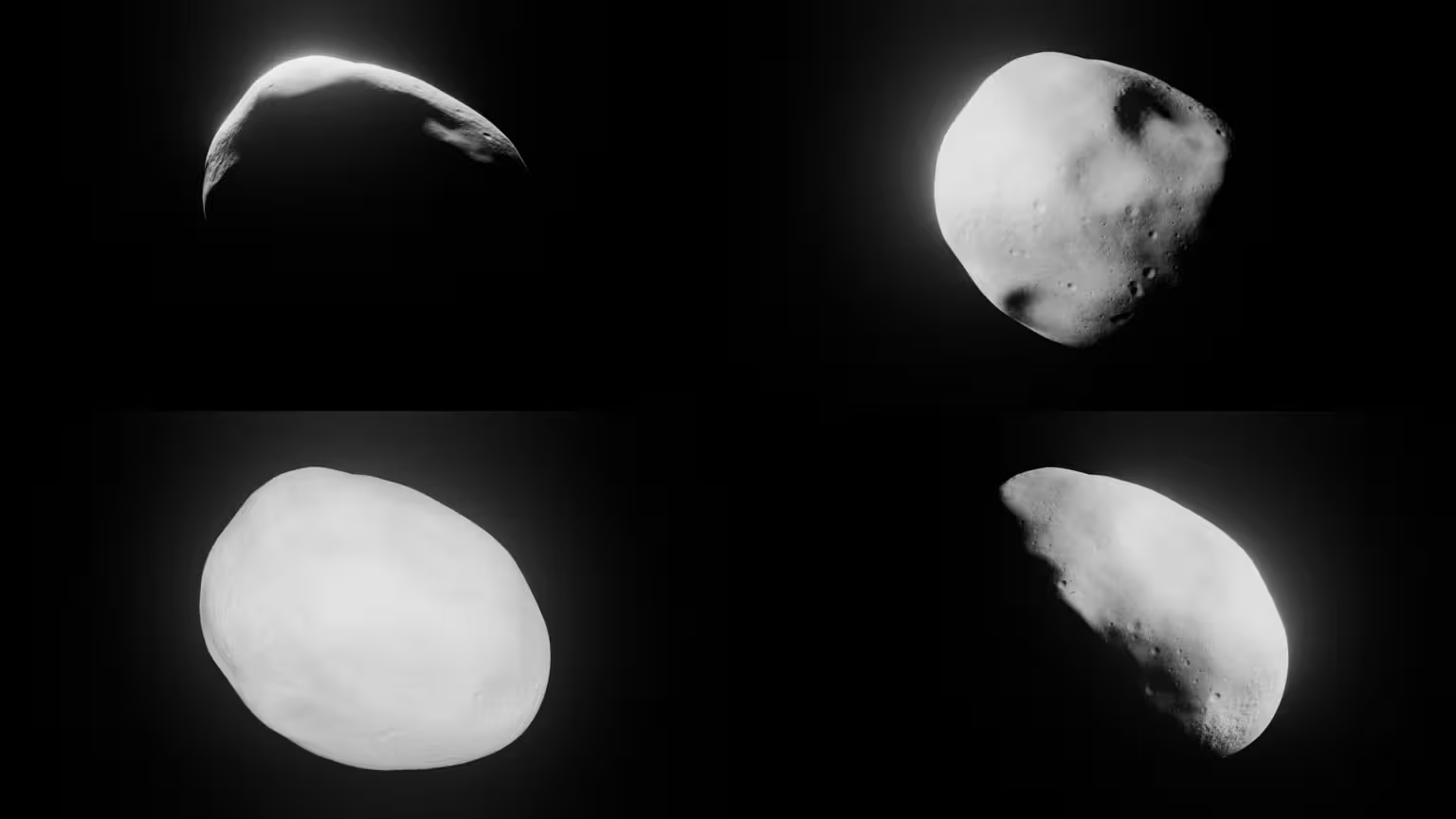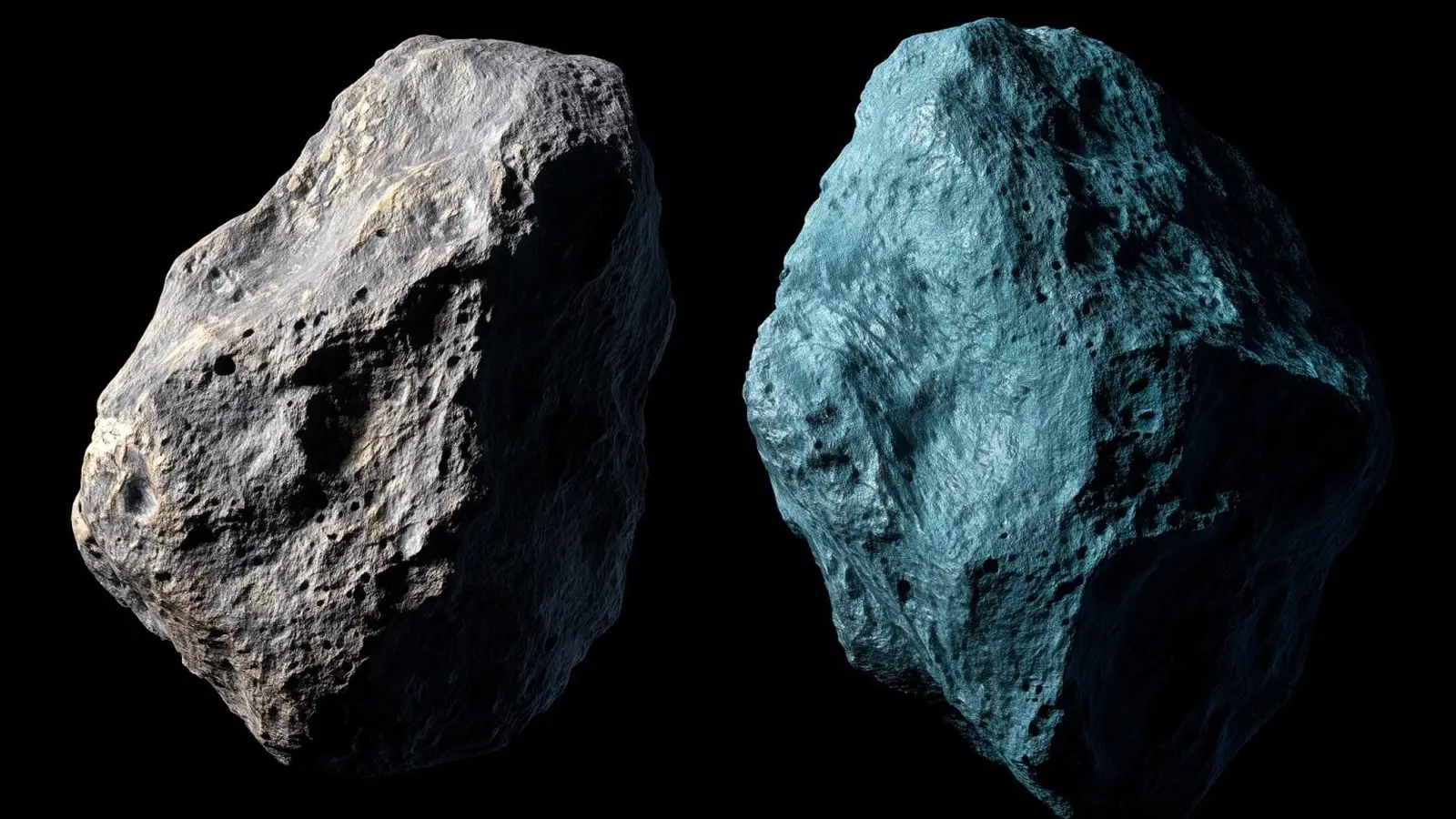8 Minutes
Ancient fragments and a surprising fingerprint
The solar system formed roughly 4.6 billion years ago from a rotating disk of gas and dust. Asteroids are among the best-preserved remnants of that era: small bodies that preserve information about early planet formation, collisions, and chemical differentiation. Researchers categorize asteroids by the light they reflect — their spectra — which reveals surface minerals such as metals, silicates, or carbonaceous material. These spectral classes (labeled with letters such as M, K, C and others) help astronomers map the diversity and origins of asteroid populations.
A new study led by IPAC scientist Joe Masiero, published in The Planetary Science Journal, used a different observational axis — polarization of reflected light — to connect two seemingly distinct asteroid classes. The surprising result: both M-type (metal-rich) and K-type (silicate-rich) asteroids show evidence of the same rare surface coating: troilite, an iron sulfide (FeS). That troilite signature, uncommon across the asteroid belt, acts as a fingerprint linking objects that otherwise appear compositionally different.
"Asteroids offer us the chance to look at what was going on in the early solar system like a freeze frame of the conditions that existed when the first solid objects formed," Masiero said. The study uses near-infrared polarization measurements to probe surface minerals that ordinary reflected-light spectra can miss, offering a new dimension to asteroid remote sensing.

This image shows how an asteroid would appear during different phases depending on its location relative to the Sun, similar to how the Moon has phases. Credit: Caltech/IPAC/K. Miller
Asteroid classification, regolith, and observational challenges
Asteroid spectral classes are valuable but incomplete. M-type asteroids show spectral behavior consistent with abundant metal, while K-type asteroids exhibit silicate signatures that resemble certain meteorite groups. However, an asteroid's appearance in spectra depends on many factors beyond chemistry: the particle size and porosity of the regolith (the loose dust, pebbles, and boulders that coat the surface), the shape and rotation of the object, space weathering, and the phase angle — the Sun–asteroid–Earth geometry when observed. These variables can mask or alter diagnostic spectral features.
Because phase angle affects both brightness and spectral features, two objects with different bulk compositions can sometimes appear more similar — or more different — depending on observation geometry. That ambiguity motivated Masiero and collaborators to add polarization as a complementary diagnostic. Polarization measures the preferred orientation of light waves after reflection, and it responds to surface texture, grain composition, and particle size in ways that spectral reflectance does not.
"While spectra indicate that there are different minerals on the surface of these objects, we’re trying to figure out how different these bodies truly are," Masiero explained. "We want to wind the clock back to when these formed and what conditions they formed under in the early solar system."
This animation shows how an asteroid would appear during different phases depending on its location relative to the Sun, similar to how the Moon has phases. Credit: Caltech/IPAC/K. Miller
Using polarization to detect troilite and infer parent bodies
Polarization as a third observational axis
Polarization describes the orientation of light waves and is commonly used in atmospheric and planetary studies. Different minerals polarize reflected light differently across wavelengths and viewing geometries. Masiero used near-infrared polarization measurements with the WIRC+Pol instrument at Caltech’s Palomar Observatory to measure how the degree and angle of polarization changed with phase angle for a sample of M- and K-type asteroids.
Unlike brightness or spectral slope, polarization can reveal subtle contributions from small or transparent grains on the surface, including coatings and dust layers that may not dominate reflectance spectra. In this study, changes in polarization with phase angle showed a consistent response across the M- and K-type targets that matches laboratory and theoretical expectations for surfaces coated by troilite (iron sulfide).
"Polarization gives us insight into the minerals in the asteroids that we can’t get from just how well the asteroid reflects sunlight, or what the reflected light’s spectrum looks like," Masiero said. "Polarization gives you a third axis to ask questions about the surface mineralogy that’s independent of brightness or spectral information."
Observations from Palomar
Masiero emphasized the role of Palomar: "Palomar is such a fabulous facility. It’s great to interact with the observing team there; the telescope operators and the support astronomers really are helpful in making sure you can get the best data possible. For the infrared polarization data I needed, there is no other instrument that can get nearly as deep. This is an asset unique to Palomar." The WIRC+Pol instrument enabled precise near-infrared polarization measurements of faint asteroid targets, extending the reach of polarization diagnostics into a spectral region less affected by space weathering.
Implications: common parent bodies and surface processes
The detection of a troilite-rich dust coating on both M- and K-type asteroids suggests a shared history. Troilite is not ubiquitous across the asteroid belt, so its presence on two compositionally distinct classes points to one of two broad scenarios: either these asteroids are fragments from different depths of the same larger parent bodies that were once differentiated (with metal-rich cores, silicate mantles, and troilite-bearing layers), or a pervasive troilite dust cloud coated fragments after a catastrophic breakup.
This layering idea is analogous to Earth’s internal structure: a differentiated parent asteroid could produce metal-rich fragments (analogous to core material) and silicate-rich fragments (mantle or crust). A troilite layer or dust veneer produced during heating, partial melting, or impact processing could have settled onto many fragments, leaving a diagnostic surface coating visible via polarization.
Either interpretation has important consequences for models of early solar system dynamics, collisional evolution, and the distribution of sulfide minerals among small bodies. If troilite-coated fragments derive from the interiors of large differentiated planetesimals, then these results add new observational constraints on how widespread differentiation and internal heating were among early solar system bodies.
Expert Insight
Dr. Lina Torres, an astrophysicist specializing in small-body surfaces, comments: "Polarimetry is an underused but powerful tool for asteroid science. What this study shows is that by combining polarization with spectroscopy and thermal measurements we can disentangle surface coatings from bulk composition. The troilite connection is compelling because it offers a testable prediction: meteorite collections and future sample-return missions could look for matching troilite signatures and grain-size distributions. That would directly link remote sensing to laboratory analysis."
This kind of multidisciplinary approach — combining telescopic polarimetry, spectroscopy, meteorite geochemistry, and spacecraft sampling — will be essential to decode the complex histories preserved by small bodies.
Conclusion
Polarization measurements from Palomar have uncovered a rare troilite dust signature common to both M-type and K-type asteroids, suggesting these superficially different objects may share a common ancestry or experienced the same post-breakup coating process. By adding polarization as a third observational axis alongside brightness and spectral shape, scientists gain sensitivity to surface coatings and grain properties that can hide beneath ordinary spectra. The findings strengthen the case that many asteroids are fragments of larger, differentiated parent bodies and emphasize the need for integrated observations and sample analysis to reconstruct the solar system’s formative collisions and chemical evolution.
"You can’t go and rip the Earth open to see what is inside, but you can look at asteroids—the leftover bits and pieces, the unused components from solar system formation—and use them to see how our planets were built," Masiero said.
Source: scitechdaily


Leave a Comment